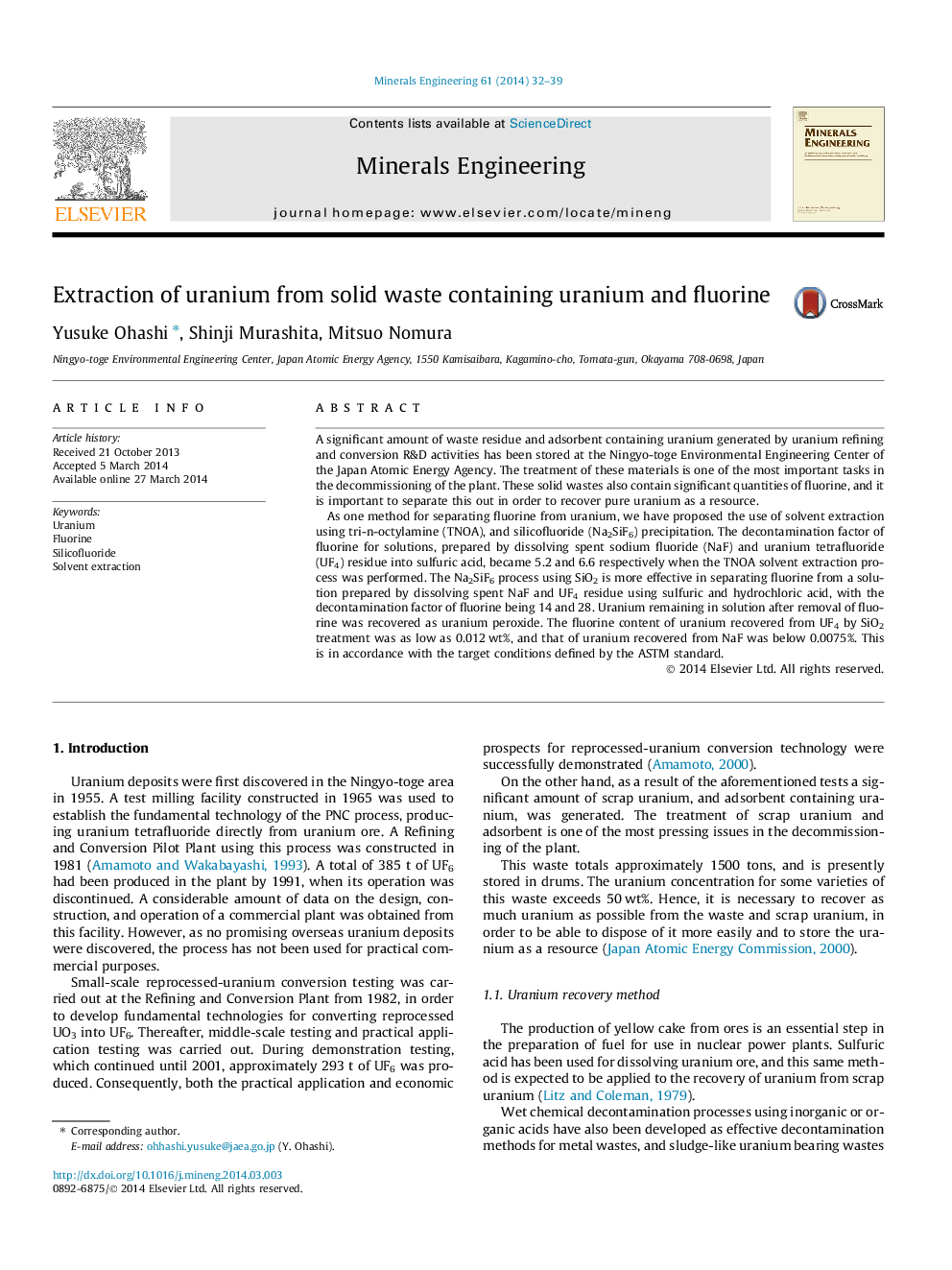| Article ID | Journal | Published Year | Pages | File Type |
|---|---|---|---|---|
| 233267 | Minerals Engineering | 2014 | 8 Pages |
•Solid wastes containing uranium were dissolved in hydrochloric acid and water.•The decontamination factor of fluorine from uranium became 10–28 by SiO2 treatment.•The uranium recovery ratios from solid wastes were more than 80%.•The fluorine content of uranium recovered from UF4 was as low as 0.012 wt%.
A significant amount of waste residue and adsorbent containing uranium generated by uranium refining and conversion R&D activities has been stored at the Ningyo-toge Environmental Engineering Center of the Japan Atomic Energy Agency. The treatment of these materials is one of the most important tasks in the decommissioning of the plant. These solid wastes also contain significant quantities of fluorine, and it is important to separate this out in order to recover pure uranium as a resource.As one method for separating fluorine from uranium, we have proposed the use of solvent extraction using tri-n-octylamine (TNOA), and silicofluoride (Na2SiF6) precipitation. The decontamination factor of fluorine for solutions, prepared by dissolving spent sodium fluoride (NaF) and uranium tetrafluoride (UF4) residue into sulfuric acid, became 5.2 and 6.6 respectively when the TNOA solvent extraction process was performed. The Na2SiF6 process using SiO2 is more effective in separating fluorine from a solution prepared by dissolving spent NaF and UF4 residue using sulfuric and hydrochloric acid, with the decontamination factor of fluorine being 14 and 28. Uranium remaining in solution after removal of fluorine was recovered as uranium peroxide. The fluorine content of uranium recovered from UF4 by SiO2 treatment was as low as 0.012 wt%, and that of uranium recovered from NaF was below 0.0075%. This is in accordance with the target conditions defined by the ASTM standard.
